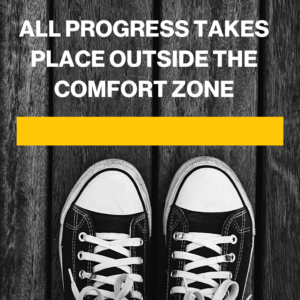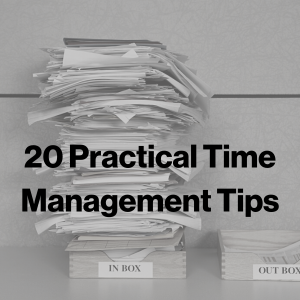 For most people, much of their day is spent in what is known as the ‘comfort zone’. This is a safe space where we know what to expect and have a confident grip on how we operate and the results we achieve. The problem is though, it’s very easy to become too comfortable here. Habits of complacency, procrastination and inertia can all begin to take root, and if left unchecked, these habits can start to impact both our personal and professional lives, stopping us from pursuing goals, pushing ourselves and challenging our abilities – resulting in great opportunities passing us by. So, what can we do to ensure our comfort zone doesn’t entrap us in a self-imposed prison and stop us from doing what really matters to us? Read on to find out.
For most people, much of their day is spent in what is known as the ‘comfort zone’. This is a safe space where we know what to expect and have a confident grip on how we operate and the results we achieve. The problem is though, it’s very easy to become too comfortable here. Habits of complacency, procrastination and inertia can all begin to take root, and if left unchecked, these habits can start to impact both our personal and professional lives, stopping us from pursuing goals, pushing ourselves and challenging our abilities – resulting in great opportunities passing us by. So, what can we do to ensure our comfort zone doesn’t entrap us in a self-imposed prison and stop us from doing what really matters to us? Read on to find out.
How do Comfort Zones Develop?
The English philosopher Bertrand Russell once said that the ‘The chains of habit are too light to be felt until they are too heavy to be broken’. Research into habits has highlighted that they tend to develop on a subconscious level, with the holder often oblivious to their very existence. Whilst some of our habitual activities and patterns of behaviour are designed to support and serve us in a positive way, others can be less salubrious.
As an evolutionary function of the human mind is to keep us safe from harm, we commonly develop habits that prevent us from doing things that would put us at risk or expose us to what we may perceive as dangerous. Though this can be advantageous when facing a predator or traversing new terrain, it is less useful when that perceived risk is public speaking, taking charge of a situation with your team, or accepting a career opportunity that would fully test our capabilities.
It is through these routine and repetitive habits that our ‘comfort zone’ comes into existence. The sum product of all our conditioned behaviours and the continuous patterns of thought that we engage with every day of our lives, overtime a safe metaphorical space develops in our mind where we feel secure and at ease. It is somewhere where we can operate at a relatively steady and familiar pace, without disturbance, risk or threat to our perceived safety.
In the modern world however, where such perceived threats are less to do with physical harm and more concerned with psychological or egological harm, our comfort zone doesn’t always work for us in every situation. Sometimes its accountable for holding us back from realising our true potential. What we deem as ‘comfortable’ can actually become a place of stagnation and diminution – one that stops us from seizing opportunities for growth because it may involve something unfamiliar or something we believe would leave us exposed.
The good news, however, is that you are not your habits, and your comfort zone is something that can be stretched and controlled through deliberate effort and intentional thought. In this blog we are going to examine what you can do to overcome these limitations and how you can expand your thinking, removing restrictions on the many possibilities that lie before you.
What is the ‘comfort zone’?
The comfort zone is defined by Judith M. Bardwick, (1995) as “a behavioural state within which a person operates in an anxiety-neutral condition, using a limited set of behaviours to deliver a steady level of performance.” In essence, it is where we feel at ease, safe and in control of what is happening around us, because our regular activities and behaviours adhere to a routine pattern, thereby reducing risk and stress. This creates a psychological state of mental security and minimised anguish.
The term was first coined in 1908 by psychologists Robert M. Yerkes and John D. Dodson as a result of their research on rats. These researchers discovered that a certain amount of anxiety and stress can motivate and aid performance, but too much and performance rates decline. They identified three key areas of performance:
• The comfort zone – where we experience low levels of anxiety or arousal. This can lead to a lack of motivation and boredom.
• The optimal performance zone – a state of mild agitation and stress, which increases attention and interest compelling you to perform at a higher level.
• The danger zone – where overwhelm sets in, leading to panic, loss of concentration, lowering of performance and burnout. It can also reinforce the idea that challenging ourselves is a bad thing.
Our natural condition is in the comfort zone but in order to maximise performance, a state of relative anxiety is required. So, while we venture into a state of elevated stimulation and mild stress to up our game so that we might meet the situation at hand, the tendency is to return here immediately after. The comfort zone, at any one time, is therefore not necessarily a negative or a positive thing – it’s how we use it that determines its impact on our lives. If we lack the impetus that stress and risk can create, we miss opportunities to stretch ourselves and grow. If we spend too much time in the optimal performance zone, we don’t get the chance to rest or recharge which can have detrimental affects on our physical and mental wellbeing. It is, plainly speaking, what we do with it that counts.
How to expand your ‘comfort zone’
Whilst many terms abound for overcoming the stifling aspect of one’s comfort zone, best-selling author and fear expert Rhonda Britten suggests that, as opposed to ‘getting rid of’ our comfort zone, we instead focus on expanding it as large as it can grow. Rhonda asserts that,
The larger it is, the more masterful we feel in more areas of our life. With a large comfort zone, you can take risks that really shift you’.
So how do we go about stretching our comfort zone? As a proven authority and global expert in this area, having delivered transformational experiences to over 9 million graduates over the past 108 years, Dale Carnegie is well positioned to provide a few recommendations that can help here. To begin with, we suggest building off your original comfort zone, starting small and gaining momentum and confidence as you go. This way, incremental progress can be observed and you won’t feel overwhelmed or discouraged by challenges you are not mentally prepared for yet. Read on for more tips for stepping into your stretch zone:
1. Become conscious of what is outside of your comfort zone. Draw a medium-sized circle on a piece of paper and label it ‘Comfort zone’. Write down a handful of things you do regularly without issue inside the circle (for comparison purposes only). Next, outside the circle, jot down things you would like to do or that could be of significant value to you, personally or professionally. Pause to think about what stops you from doing these things. Is it the fear of failure, niggling self-criticism, concern of being exposed and vulnerable, or the thought of what others might say?
2. Be clear on what you want to achieve. As the primary emotion you want to overcome is fear, you need to discredit and disempower that feeling as much as possible. Identify how that feeling of fear surfaces in each situation you listed outside the circle above. Dissect this further – what is specifically that generates this fear? Is it worry over how you look / sound, is it anxiety from being with people you don’t know, are you worried about disappointing other people? Spend time really understanding what it is about this situation that gets your heart rate pulsing and makes you sweat.
3. Commit to discomfort. Pick one of the items in the above circle; start with a small one. Make a commitment to exercise it as soon as possible – and to get comfortable with the discomfort. If its speaking in front of people, volunteer to give a presentation at work; if its managing others, suggest you lead a team meeting; if its networking, maybe try an online event and commit to making at least 5 new contacts before leaving.
4. See failure as feedback. The fear of failure can be paralysing, but only if we look at the situation as absolute and final. Instead try to see the fluidity of everything we do and recognise that we don’t get just one shot at anything. Failure is the best teacher, allowing us to learn to do better next time. Its all part of the journey.
5. Spend time with ‘optimal performers’. Jim Rohn famously said that ‘You are the total of the 5 people you spend the majority of your time with’. If you are looking to improve at something, seek out those who are already performing at a very high level in this area – they will certainly be spending time in their ‘optimal anxiety zone’. Their influence will be infectious.
6. Cut the excuses. Be honest with yourself. As opposed to rationalising why you can’t / won’t / shouldn’t do something, have the courage to be frank with yourself and confront what is really the matter. By admitting to the fear and honestly identifying what the root is, you are better able to address and overcome it.
7. Identify the payout. Crystalise what the benefits are of completing this dreaded activity you have committed to and use these as fuel to feed your motivation and determination. What will it be like once you have done it? What will it give you?
8. Don’t take yourself too seriously. Adopt a growth mindset and see that mistakes and setbacks are part of the learning process. Risk-taking invariably involves a degree of failure – that’s where the lessons are. Learn to laugh at yourself when things go wrong and chalk it up to experience.
9. It’s the journey that matters, not the destination – so have fun along the way. Take time to appreciate the huge amount of courage it takes to do what you’re doing and approach it with a sense of fun and enjoyment. Learn to appreciate the opportunities that are opening up, the experiences you are having and all that you are discovering about yourself. And don’t forget to celebrate your successes as you go.
Our comfort zone is an integral part of who we are. Spending time here allows us to rest and reset for future times when we need to be at an ‘optimal state of anxiety’. It also allows us to process the benefits received when we do step outside it. Our comfort zone only becomes delimitating when we use it to excuse stagnation, allowing it to control our behaviour and stop us from doing things that we want to do. By continually taking time to explore what is really happening internally, being honest with ourselves about the fear we’re feeling, and then intentionally committing to overcoming the mental blockers we face, we are able to expand our comfort zone, increase our confidence and live more enriched and well-rounded lives, free of self-imposed restrictions. As Neale Donald Walsh says, ‘Life begins at the edge of your comfort zone”.


